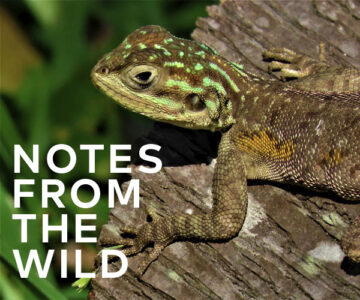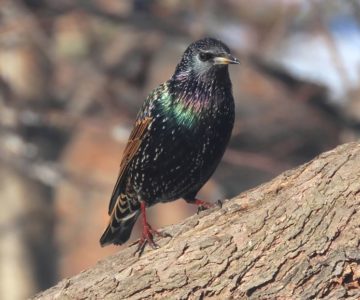Adapting to Survive
Animals use camouflage, poison and deception to live another day.
Faced with a life-threatening coronavirus, we humans have used the evolutionary advantage of our big brains to promote our survival. With extraordinary speed, we have altered our behaviour and developed vaccines. Our response to the menace is an example of how similar humans often are to other animals on this planet. All of us have evolved particular attributes to adapt and survive.
These survival traits are wonderfully diverse and creative. Many animals are masters of disguise, employing camouflage to avoid being eaten or to secure a good meal. In Headwaters, for example, there are animals that look like sticks, leaves, or bird droppings (really!). Rather than disguise themselves, other animals opt for a flashy display of colour to announce they are poisonous. Still others are poseurs, palatable creatures that discourage predators by looking like poisonous ones.
The drive to survive makes for animals that delight and amaze. Here are a few local examples.
Monarchs and vaccination passports
Last July, I watched as monarch butterflies sailed over the milkweed-filled meadows of Forks of the Credit Provincial Park. Close observation revealed females touching down, curling their black and white abdomens, and depositing eggs on the underside of milkweed leaves. Soon another generation of caterpillars would emerge and, if very lucky, survive to butterflyhood and then participate in one of the most improbable journeys in all of nature – a 4,000-kilometre flight to the state of Michoacán in Mexico.
For Headwaters-born monarchs, the odds of making it to their overwintering sites in Michoacán’s endangered oyamel fir forests are low. These butterflies run a gauntlet of hazards on the way. Violent storms take a toll, as do collisions with cars and trucks on the roads that crisscross their migratory paths.
But to assist their travels, monarchs carry a passport that proves they have been inoculated against bird predation: the colour orange. This vibrant hue advertises a monarch’s toxicity. The toxicity comes from the cardiac glycosides in the milkweed sap that monarch caterpillars ingest as they feed on the plant’s leaves and stems. These glycosides do not exist in milkweed pollen or nectar, which are safe for bees and other pollinators to feed on.
Like Covid vaccinations, cardiac glycosides don’t confer complete protection. Some birds, usually those with no previous experience of monarchs, will attempt to eat the butterflies. But without these poisons and the orange passports that advertise them, the wondrous spectacle of monarch migration likely wouldn’t exist.
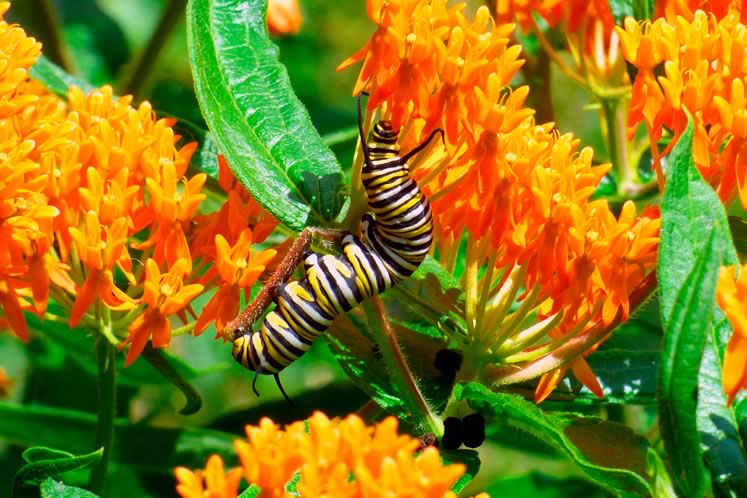
Monarch caterpillar. Photo by don Scallen.
A study of blue jays showed they may vomit after eating monarchs. Of course, a vomited monarch is a dead monarch, and this seems to contradict the proposition that toxicity helps monarchs survive. But the price paid by sacrificial monarchs contributes to the overall fitness of the species. The blue jays that ignored the orange warning will henceforth associate that colour with nausea. Surviving monarchs will benefit, and this umbrella of protection will likely safeguard other orange creatures as well.
The cardiac glycosides that protect monarchs are steroids that, as their name suggests, affect the heart. In fact, cardiac glycosides have been used to treat heart disease in humans by enhancing heart contractions, but these plant-based compounds can cause serious side effects if improperly administered.
These serious effects are one reason few herbivorous insects have mastered the ability to eat milkweed leaves and stems. Common milkweed, abundant in fields and meadows throughout Headwaters, is eaten by only 11 or so insect species. This may sound like a lot, but in a world of thousands of plant-eating insects, the number is small. Like monarch butterflies, other milkweed specialists benefit from sequestering the poison in their bodies, and like monarch adults, most warn of their toxicity by displaying the same orange and black. These insects include milkweed leaf beetles, milkweed bugs and milkweed tussock moth caterpillars. As with monarchs, their survival requires a display of their trump card.
Curiously, two species of birds – avian outliers that have evolved ways to eat monarchs without getting sick – are also orange and black. Black-headed grosbeaks and black-backed orioles live in the oyamel forests where monarchs overwinter. Both are major monarch predators. Perhaps wearing the same colours as their monarch prey is an improbable coincidence. Or perhaps there is a biological explanation. Could they be toxic as well?
(Lest the foregoing makes you think I’m the one consuming too many drugs, know that poisonous birds do exist. The skin and feathers of the pitohui, for example, a robin-sized bird from Papua New Guinea, contain potent toxic alkaloids. Native New Guineans call them “rubbish birds” because they can’t be eaten, at least without heroic efforts to detoxify them.)
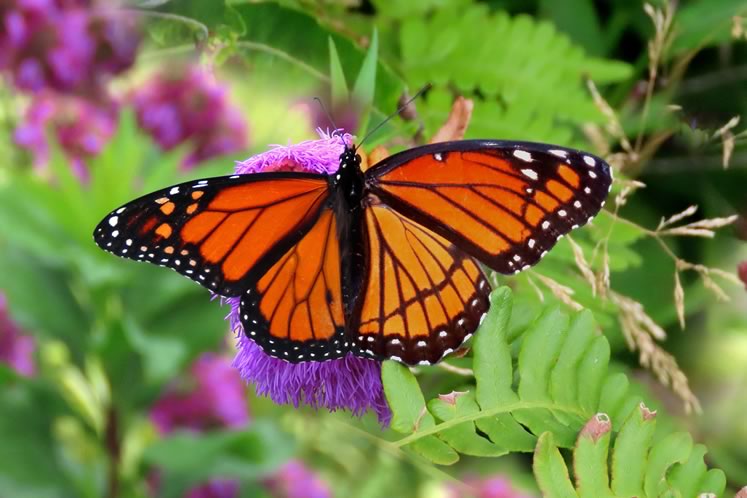
Composite photo showing a monarch butterfly (left) and the monarch-like mimicry of a viceroy butterfly (right). The similar colouring warns predators of their toxicity. Photo by don Scallen.
A fascinating relationship exists between monarch butterflies and the very similar-looking viceroy butterflies. In Headwaters, viceroys are usually seen near wetlands with willows, the food their caterpillars thrive on. So close is the resemblance between monarchs and viceroys that most of us can’t tell the difference. And this is exactly the point. Other animals, such as birds, can’t distinguish them either. Scientists long assumed viceroys were “freeloaders,” insects of choice edibility posing as poisonous monarchs. A relationship like this is called Batesian mimicry: the mimic – the viceroy in this case – protects itself by looking like a noxious counterpart.
But in science, as in other areas of life, we need to be careful about making assumptions. Research has found that viceroys can also be toxic. They sequester distasteful chemicals their caterpillars metabolize from the willow leaves they eat. This has led scientists to reclassify the relationship between monarchs and viceroys as “Mullerian mimicry,” which occurs when two or more different noxious organisms evolve to look like each other. If true, monarchs and viceroys both amplify the message that the combination of orange and black tastes bad, and both benefit from a stronger advertising campaign.
This conclusion appears credible, but the stunning complexity of the natural world might demand another reworking of the monarch-viceroy relationship. In Florida, viceroys mimic queen butterflies, close relatives of monarchs. Researchers have found that Floridian viceroys juggle their toxin production according to the number of queen butterflies found in their habitat. If there are lots of queens, viceroys dampen their toxicity, rendering them more palatable. It’s speculated that more queens bestow more protection on the viceroys, making it a good “decision” for them to ride on the queen butterflies’ toxic coattails without resorting to a broader defence. On the other hand, in habitats with fewer queens, viceroys protect themselves by boosting their toxicity. Could this flexible gambit also define the relationship between viceroys and monarchs? Perhaps viceroys are more – or less – toxic according to the number of monarchs around.
Another reason viceroys might vary their toxicity? Apparently, ingesting and living with toxins uses a lot of energy. If an organism can get away with fewer toxins in its system, so much the better. This explains why only a subset of creatures is poisonous. To put it in human terms, toxins cost money.
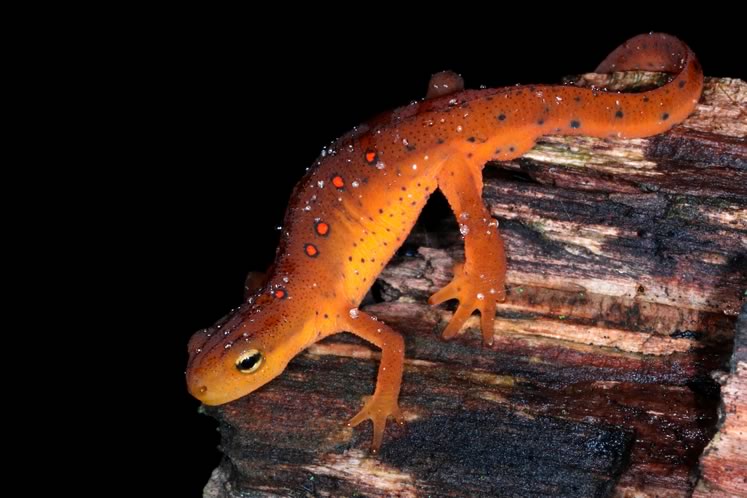
Red eft. Photo by don Scallen.
Red efts and fugu chefs
Last spring, I walked in a misty rain along a trail deep in the Credit River Valley north of Belfountain. The dark green fronds of hemlock shed water on the path below. Small, vivid forms moved among the glistening moss and the mushrooms rising from the sodden earth. Red efts.
Despite their name, red efts aren’t red, but a lovely monarch orange. On wet days, these small salamanders often wander the forest floor in search of the tiny invertebrates they eat. For such colourful animals, this behavior would, at first, suggest suicidal tendencies. Their Day-Glo coloration makes them obvious to potential predators.
But as with monarch butterflies, this is precisely the point. And it reveals a truism in biology – small, brightly coloured creatures are not recommended as part of a healthy diet. Obvious examples from the tropics are the tiny, but deadly, poison dart frogs. Red efts aren’t as toxic as these frogs, but they still pack a wallop.
Efts are juvenile red-spotted newts. After transforming from tadpole-like larvae in the ponds where they’re born, they live on land for two or three years before undergoing a second transformation that turns them green, endows them with the ability to reproduce, and compels them to return to water.
Newts are protected by a potent nerve poison called tetrodotoxin throughout their lives, but the landlubbing efts contain the highest concentration. This is probably because they encounter more predatory birds and mammals than the aquatic adults. Tetrodotoxin blocks signals between nerves and muscles, leading to paralysis and sometimes death.
In their red eft stage, Headwaters newts have at least enough of this poison to kill small mammals like mice and shrews, but the rough-skinned newts of the West Coast of North America broadcast their toxicity by flashing bright orange bellies – and they can kill people. One incident serves as a sorry testament to male bravado. On a dare, a 29-year-old Oregon man chased some whisky with a rough-skinned newt. He felt sick afterwards but refused to go to a hospital and died when his heart stopped beating.
A well-known animal that shares a newt’s tetrodotoxin is the fugu or pufferfish. In Japan, this fish is considered a delicacy, but it is so dangerous that chefs must be licensed to prepare it. They carefully remove its toxic tissues before serving it to patrons. Mistakes – and fatalities – are mercifully rare.
Anyone who has raised monarch butterflies to adulthood knows the caterpillars aren’t orange, but rather yellow and black. Like the black and orange of the adults, this is a warning coloration, primarily intended to deter predatory birds and other vertebrates. Invertebrates appear unaffected. Stink bugs, spiders, flies and wasps eat monarch caterpillars with gusto.
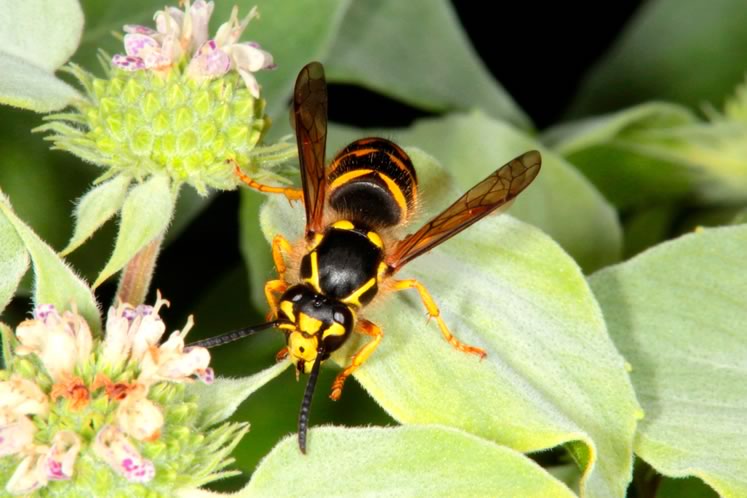
Yellow jacket wasp. Photo by don Scallen.
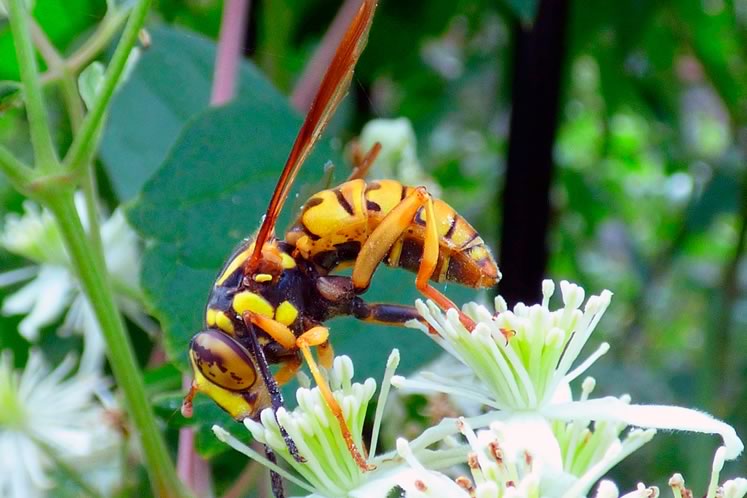
Broad-banded hornet fly. Photo by don Scallen.
Speaking of wasps, yellow and black is also the warning coloration of choice in many species. And this colour combination, unlike the orange and black of monarchs, can make us shudder. This is because we have learned to associate yellow-and-black insects with danger, just as other animals have.
A wasp’s hypodermic-like stinger can deliver a cocktail of chemicals specially concocted to inflict maximum pain. For me, a long-lasting and intense fear of wasps was the legacy of watching my mother get stung by yellow jackets when I was a boy. As an adult, I finally made peace with these insects, so I hesitate to stoke the fires of their largely undeserved notoriety. Wasps (almost) never sting unless their nests are threatened. But of course, if you suffer anaphylactic shock from stings, there is good reason to be fearful and cautious around them.
Wasps, like toxic butterflies, also serve as models for mimicry, so much so that many of the “wasps” we see aren’t wasps at all, but inoffensive flies, such as the hover fly, or even moths. As a common phenomenon, this widespread wasp mimicry must improve the life chances of the wasp pretenders. Deceiving hungry birds that have learned to associate yellow-and-black insects with a painful jolt likely serves the pretenders well.
Sticks that walk and deceptive poop
One evening, with a few like-minded friends, I shone my flashlight into the tangled branches of a hedgerow, peering intently in a search for animals cloaked to near invisibility by their resemblance to leaves and branches. Looking for cryptic creatures after dark usually works better than daytime searches. Under cover of darkness such creatures are more active, and a flashlight’s narrow beam focuses a searcher’s vision on a specific field of view.
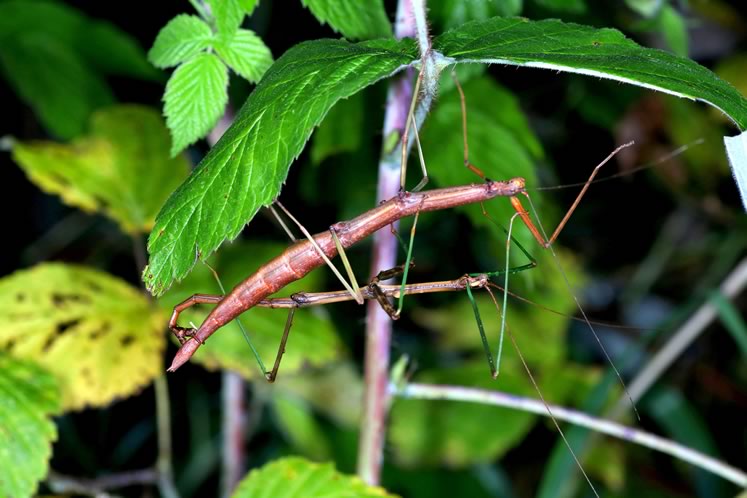
Northern walkingstick mating pair. Photo by don Scallen.
Our search soon yielded an exciting find: a female walking stick. These harmless herbivores are truly impressive. Mature females can reach 10 centimetres in length, but the most salient — and astonishing — characteristic of walking sticks is their camouflage. So accurate is their disguise, it’s easy to imagine that a sylvan fairy has waved a wand and brought a stick to life.
Camouflaged animals are ubiquitous. Hiding in plain sight works. And a great way to pull this off is to look like something inedible. Science uses the apt term “masquerade” to describe this kind of deception, and walking sticks are perfect examples. So good is their ruse that we seldom see them, yet these insects are common in Headwaters.
Camouflage serves two general purposes. Most commonly, as with walking sticks, it conceals animals from predators. Other examples include moths that meld into the bark of trees, grasshoppers with exoskeletons precisely matching the colour and texture of lichens, and woodcock mothers, mottled brown on mottled brown as they brood their eggs on the forest floor.
The other purpose of camouflage is more devious. Predators may use it to conceal themselves from prey. Ambush bugs are an example. These small predators are often yellow and brown, and can be very difficult to see when they crouch among similarly coloured flowers. There they wait with Popeye-like forearms ready to grab bees or wasps that land within reach. Or consider a bullfrog, the colour of cattails and lily pads, sitting for hours like an amphibian Buddha, then lunging with a great open gape when an unsuspecting dragonfly alights nearby.
Some predators tap into both benefits of camouflage, enhancing their hunting success as well as protecting themselves from larger predators. Praying mantises are green or brown, allowing them to hide among grasses and goldenrod as they wait for grasshoppers and other small prey to wander within reach of their raptorial front legs. But their camouflage also protects them from avian predators such as kingbirds and kestrels.
The sheer numbers of camouflaged animals, especially insects, offers some interesting insights into ecology. One is that small, camouflaged herbivores are good eating. Why hide if you’re not on anyone’s menu? Another insight is perhaps less obvious. Camouflaged insects provide excellent evidence of the visual acuity of the birds that hunt them. The spectacular camouflage of a walking stick is no accident. It looks as it does because of an eons-long arms race with birds. As bird vision improves, walking sticks are forced to rejig their guise to look even more like – well – sticks. In turn, birds are forced to up their game by further enhancing their vision.
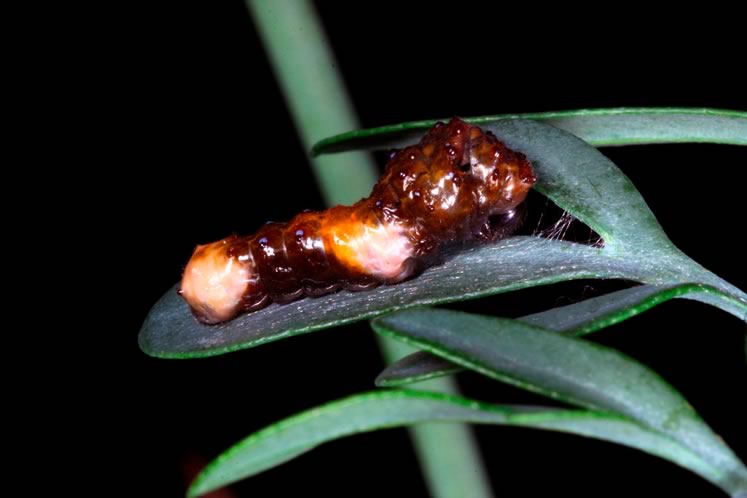
Giant swallowtail caterpillar. Photo by don Scallen.
Other wonderful, if slightly unsettling, examples of masquerade are creatures that look like poop. In Headwaters, many moths and caterpillars “choose” this ploy to befuddle potential predators. Giant swallowtail caterpillars look so much like bird droppings, right down to a gag-inducing sliminess, that by day, they don’t bother concealing themselves like other caterpillars. Rather, they often sit atop leaves in plain view. This tells us that bird vision, while impressive, can be fooled by a clever disguise. And of course, it also tells us that few self-respecting birds would ever stoop to coprophagy!
Stayin’ alive
The drive to survive is powerful, and evolution has come up with a catalogue of wildly diverse, often outlandish, innovations to meet the challenges faced by both the hunter and the hunted. We humans benefit from this creativity when we admire the beauty of a monarch butterfly or the extraordinary structure of a walking stick, both wondrous animals, but only two of the many that employ poison, camouflage and deception to live another day.
Related Stories
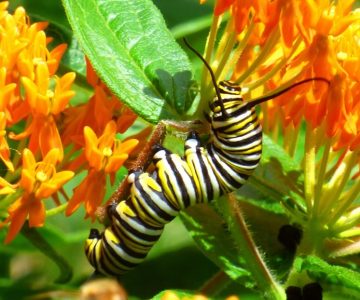
Caterpillars and Chrysalides
Aug 17, 2017 | | Notes from the WildCaterpillar food plants will summon egg-laying female butterflies to your yard. Then, if sharp-eyed, you may find the minute eggs. More likely you’ll find the caterpillars.
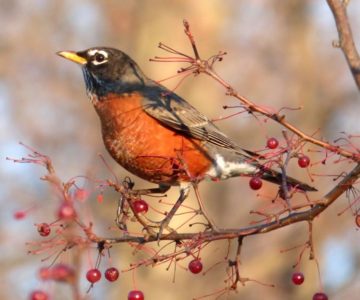
Signs of Spring
Mar 3, 2022 | | Notes from the WildIn March nature pushes against the shackles of winter, and then bursts free with birdsong and butterflies.
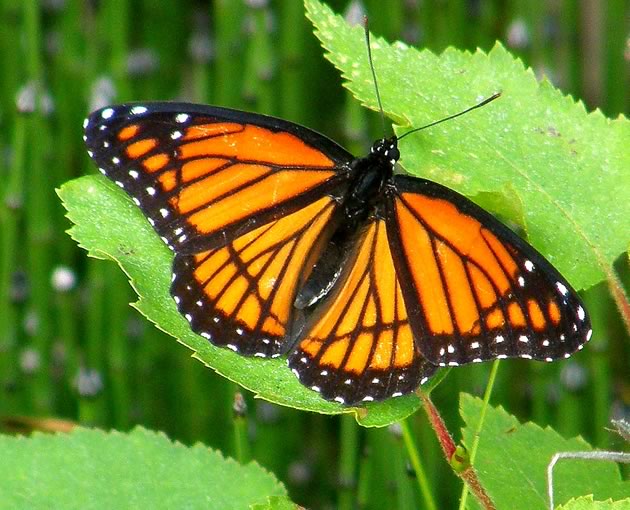
Mimicry
Oct 15, 2012 | | Notes from the WildLike everything in nature, mimicry is complex and nuanced.
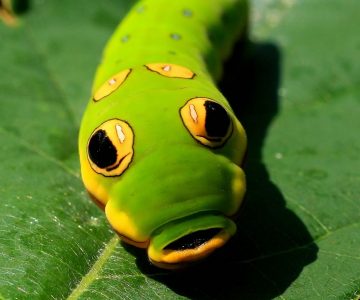
Spicebush Swallowtail Caterpillar
Sep 4, 2018 | | Notes from the WildI’ve written about our remarkable caterpillars before, but so many interesting ones inhabit our hills that another look is warranted.
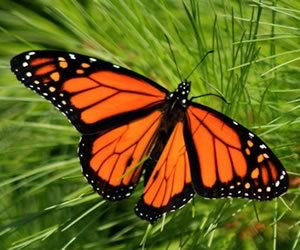
Monarchs: Children of the Sun
Aug 30, 2010 | | Notes from the WildMonarchs are children of the sun. The boldness of Sol this summer has energized their life cycle.






